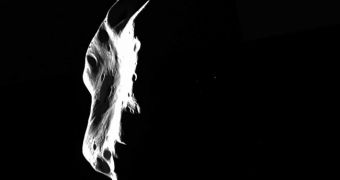The Rosetta spacecraft, operated by the European Space Agency (ESA), has recently beamed back impressive images of the asteroid Lutetia. Astronomers say that the new data deepens the mystery associated with space rocks, rather than clear it up.
The photographs were taken as the space probe was flying by Lutetia, with the ultimate goal of reaching the comet 67P/Churyumov-Gerasimenko in 2014. As the asteroid came in sight, the instruments aboard the spacecraft started collecting images of its surface.
The data shows asteroids in a completely new light, given that Rosetta imaged Lutetia from very peculiar angles, under interesting lighting conditions. But, far from providing some clarifications to the mysteries surrounding asteroids, the new observations made things even more obscure, Space reports.
“I've never seen anything like it. It looked as though it could have been fractured off of a mother asteroid – it was all angles and flat planes, ancient impacts overlaid by newer ones, covered by dust of some kind,” says US Rosetta Project scientist Claudia Alexander.
At this point, this asteroid is the largest ever visited by a spacecraft, with a diameter of 100 kilometers, or about 62 miles. NASA's Dawn probe is currently heading for the dwarf planet Ceres and the asteroid Vesta. Once the latter will be reached (in 2011-2012), the record Rosetta now holds will be broken.
The recent data the European spacecraft beamed back represents the combined result of no less than 17 scientific instruments crammed aboard. This allowed mission scientists to discover some very interesting peculiarities on the surface of the asteroid.
For example, the space rock revealed the existence of a giant dent in its surface, which threw astronomers off-guard. According to leading theories, it may be that Lutetia was impacted by another space rock in the past, which chipped away a piece of its surface.
But that's not the asteroid's only mystery. Researchers say that the surface looks as if someone had rolled very large boulders over it. Determining the source of these marks is proving to be extremely difficult to do, Alexander reveals.
“If that is indeed what we're seeing, the question becomes: What could have caused the rolling? Perhaps the asteroid spun up, spun down or experienced some orbital irregularity. It's not clear right now that the asteroid is subject to the forces that could cause these things,” she explains.
“This is another issue for further study. Right now we have more questions than answers. We can only speculate at this point about what we're seeing in the pictures,” Alexander concludes, quoted by Space.

 14 DAY TRIAL //
14 DAY TRIAL //